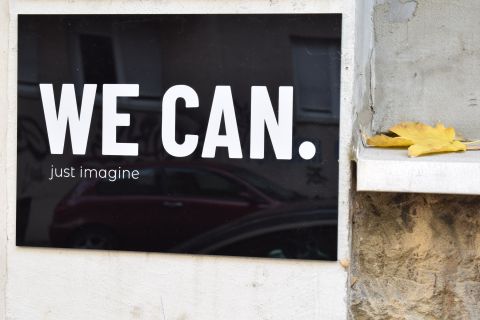
Last month Ryan and Heather hosted our Collaborate for Action and Impact event.
Forget traditional corporate charity partnerships. This wasn’t about charity of the year votes or corporate fundraising. This was about organisations coming together to learn about tackling clear social problems faster, smarter and with more impact through working with others.
Below they share reflections on why collaboration matters, and valuable insights from the people who are doing it.
Heather starts things off by telling us a bit about how the event came about..
---
Our Good Innovation website says ‘Together we have the power to solve the world's biggest problems’.
That ‘together’ doesn’t just mean us working with our clients, we want to play a part in bringing together organisations and sectors to tackle the problems we’re all facing.
Because, problems like the cost of living crisis, climate change, the mental health pandemic (and lots of others) can’t and won’t be tackled by any one organisation on their own.
It’s hard to argue with the concept of collaboration, a quick google throws up thousands of quotes about the power of coming together. They feel more fridge magnet than fresh insight, but you can take my word for it, everyone from Henry Ford to Darwin to Pharrell has shared their thoughts on the benefits.
Why aren’t more people doing it? Why isn’t working with others the first potential solution we explore? Because the reality of collaborating can be really hard. At GI we’ve run a number of large scale collaborations and have the war wounds to remind us of that.
So, we thought we’d ask three teams of cross-sector collaborators tackling issues ranging from airline safety, living with Motor Neurone Disease, to encouraging young girls to get active to be our speakers on the night. What could be more inspiring than hearing from the people who are making this happen, who have the war wounds but also the success stories?
They tell their story much better than we could so we’ve included our highlights reel from the evening below. It’s a 3 minute whip through a fascinating evening - we hope you enjoy!
As with all good conversations the event left us inspired and got our brains whirring. Below Ryan shares his three takeaways from all we heard and a question for you.
“Having a a really, simple, core spine to the entire project was important. Women in Sport had done the hard work with the insight on what the beneficiaries actually wanted. That was the rudder that kept us on the straight and narrow.”
Jamie Dickinson - Group Head of Social Value - Places For People
A theme from all of the speakers on the night was the benefit of keeping the people you’re trying to help central to the process of developing and delivering social impact ideas. It helps make sure what you create is needed and gets used. In the case of the Motor Neurone Disease Association working in partnership with Rolls Royce, Nick Goldup talked eloquently about how they kept the lived experience of MND at the heart of their collaborations with the likes of Dell, Rolls Royce and Google to design new tech solutions which can change their lives. As did Jamie from Places for People when he spoke about how throughout their collaboration with Women in Sport and Hey Girls they worked directly with women and girls to find new ways to get them more active.
“We had a lead partner, Women in Sport, who were conducting the orchestra and making sure we could keep going, be agile when we needed to be, but actually deliver”
Wendy Hawk, Head of Engagement and Communications, Women in Sport
We know from our own experience running the Good Lab that collaborations aren’t easy, and many of them fail to reach their potential. And they’re especially hard when you bring together different organisations with their own ambitions and objectives. Every good collaboration needs an organisation in the middle to constantly drive things forward, firefight, hold people to account, assess and pivot. Wendy used the term ‘conductor’ which sums it up nicely. The reason most collaborations feel hard and often fail to reach their true potential is this gets forgotten and there’s no-one conducting the orchestra. It’s important to recognise the need for this, and for whoever plays that role to allow the extra time and space needed to ensure a collaboration reaches its true potential.
“We just don’t compete on safety. And we’ve taken that idea and asked, where else do we not compete for our common good?”
Benn Godfrey - VP Procurement, Rolls Royce
Impact offers a new frontier for collaborating with organisations who you wouldn’t normally consider collaborating with - notably your competitors. As Heather says, If we all recognise that these social problems are too big for any one organisation to solve on their own, then if we’re really serious about making a dent in these problems it’s hard to argue against more collaboration. And when it comes to collaborating for impact, things start to get exciting when you get multiple organisations bringing something unique to the table. That’s when you can be more than the sum of your parts, and you can supercharge the impact you’re trying to have.
So, all that said, I’d like to leave you with a question. What could collaboration mean for you?
If you’re a Head of Innovation… How could you be exploring innovative ways to collaborate within and across your sector to deliver on your organisation's mission?
If you’re a Head of Services… Are you tapping into the power of collaboration as a mechanism to help you deliver impact more for less? Or to help you plug mission related gaps that you’re not able to solve through your current service portfolio?
If you’re Head of Corporate Partnerships… Are your team focussed on delivering impact led partnerships, or do you still have a way to go to escape the inevitable income target that often takes priority?